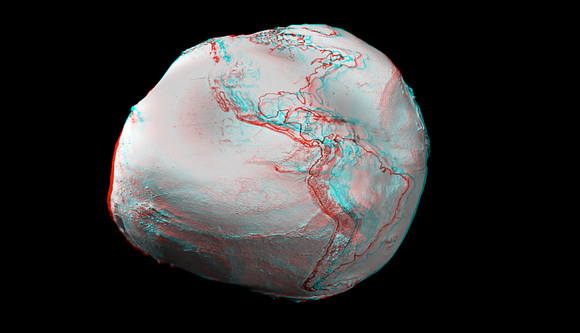[/caption] The constant of gravity, or gravity constant, has two meanings: the constant in Newton's universal law of gravitation (so is commonly called the gravitational constant, it also occurs in Einstein's general theory of relativity); and the acceleration due to gravity at the Earth's surface. The symbol for the first is G (big G), and the second g (little g).
Newton's universal law of gravitation in words is something like "
the gravitational force between two objects is proportional to the mass of each and inversely proportional to the square of the distance between them
". Or something like F (the gravitational force between two objects) is m
1
(the mass of one of the objects) times m
2
(the mass of one of the other object) divided by r
2
(the square of the distance between them). The "
is proportional to
" means all you need to make an equation is a constant … which is G.
In other words: F = Gm
1
m
2
/r
2
The equation for little g is simpler; from Newton we have F = ma (a force F acting on a mass m produces an acceleration a), so the force F on a mass m at the surface of the Earth, due to the gravitational attraction between the m and the Earth is F = mg.
Little g has been known from at least the time of Galileo, and is approximately 9.8 m/s
2
- meters per second squared – it varies somewhat, depending on how high you are (altitude) and where on Earth you are (principally latitude).
Obviously, big G and little g are closely related; the force on a mass m at the surface of the Earth is both mg and GmM/r
2
, where M is the mass of the Earth and r is its radius (in Newton's law of universal gravitation, the distance is measured between the centers of mass of each object) … so g is just GM/r
2
.
The radius of the Earth has been known for a very long time – the ancient Greeks had worked it out (albeit not very accurately!) - but the mass of the Earth was essentially unknown until Newton described gravity … and even afterwards too, because neither G nor M could be estimated independently! And that didn't change until well after Newton's death (in 1727), when Cavendish 'weighed the Earth' using a torsion balance and two pairs of lead spheres, in 1798.
Big G is extremely hard to measure accurately (to 1 part in a thousand, say);
today's best estimate
is 6.674 28 (+/- 0.000 67) x 10
-11
m
3
kg
-1
s
-2
.
The Constant Pull of Gravity: How Does It Work?
is a good NASA webpage for students, on gravity; and
the ESA's GOCE mission webpage
describes how satellites are being used to measure variations in little g (GOCE stands for Gravity field and steady-state Ocean Circulation Explorer).
The Pioneer Anomaly: A Deviation from Einstein's Gravity?
is a Universe Today story related to big G, as is
Is the Kuiper Belt Slowing the Pioneer Spacecraft?
;
GOCE Satellite Begins Mapping Earth's Gravity in Lower Orbit Than Expected
is one about little g.
No surprise that the Astronomy Cast episode
Gravity
covers both big G and little g!
 Universe Today
Universe Today
